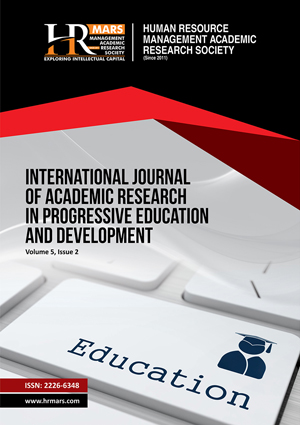
ISSN: 2226-6348
Open access
This study aims to identify 21st-century approaches used in the teaching and learning of language subjects through a systematic literature review. With the rapid advancement of technology and evolving educational needs, traditional language teaching methods have become less effective in meeting the demands of contemporary students. This study examines various modern approaches, including project-based learning (PBL), flipped learning, the integration of technology and digital tools, gamification, and collaborative elements within language teaching. Through an analysis of literature from various empirical studies, the findings indicate that 21st-century approaches not only enhance student engagement and motivation but also enrich their learning experiences through deeper interactions, the development of critical thinking and problem-solving skills, and improved communication abilities. The collaborative elements in language teaching foster cooperation and interaction among students, allowing them to learn from one another and develop social skills. Additionally, the integration of technology in language teaching enables more flexible learning with greater accessibility, allowing students to learn at their own pace and access learning materials from anywhere. In conclusion, 21st-century approaches in language teaching and learning equip students with relevant skills to navigate the challenges of the modern era, making learning more effective and meaningful.
Alawiah, T. Yassi, A. H., Nasmilah, & Pammu, A. (2022). Proposed 21st-century learning themes in English classrooms. Journal of Language Teaching and Research, 13(3), 583–589. https://doi.org/10.17507/jltr.1303.14
Arabloo, P., Hemmati, F., Rouhi, A., & Khodabandeh, F. (2022). The effect of technology-aided project-based English learning on critical thinking and problem solving as indices of 21st-century learning. Journal of Modern Research in English Language Studies, 9(1), 125–150. https://doi.org/10.30479/jmrels.2020.14077.1730
Castañeda, L., Marín, V. I., & Villar-Onrubia, D. (2024). Relational topologies in the learning activity spaces: Operationalising a sociomaterial approach. Education Tech Research and Development, 72, 2793–2815. https://doi.org/10.1007/s11423-023-10296-z
Cheraghi, Z., & Omranpour, H. (2023). The effect of gamification on developing EFL learners' vocabulary learning in flipped classes. Journal of English Language Teaching and Learning, 15(31), 33–47. https://doi.org/10.22034/elt.2022.53725.2514
Dashkina, A., Kobicheva, A., Lazovskaya, T., Tokareva, E., Tarkhov, D., & Guselnikova, I. (2022). Examining the effectiveness of computer-supported collaborative learning for language proficiency purposes. Sustainability, 14(10), 5908. https://doi.org/10.3390/su14105908
Elsa, C., & Anwar, K. (2021). The perception of using technology Canva application as a media for English teacher creating media virtual teaching and English learning in Loei, Thailand. Journal of English Teaching, Literature, and Applied Linguistics, 5(1), 62–69. https://doi.org/10.30587/jetlal.v5i1.2253
Guzzo, R. A., Jackson, S. E., & Katzell, R. A. (1987). Meta-analysis analysis. Research in Organizational Behavior, 9, 407–442.
Huang, H. W. (2021). Effects of smartphone-based collaborative vlog projects on EFL learners’ speaking performance and learning engagement. Australasian Journal of Educational Technology, 18, 18–40. https://doi.org/10.14742/ajet.6623
Izhar, N. A., Ishak, N. A., & Baharudin, S. M. (2023). A bibliometric analysis of 21st-century learning using Scopus database. International Journal of Learning, Teaching and Educational Research, 22, 225–240. https://doi.org/10.26803/ijlter.22.3.14
Jamali, M., & Krish, P. (2021). Fostering 21st-century skills using an online discussion forum in an English for specific purposes course. Malaysian Journal of Learning and Instruction, 18(1), 219–240. https://doi.org/10.32890/mjli2021.18.1.9
Khlaisang, J., & Sukavatee, P. (2023). Mobile-assisted language learning to support English language communication among higher education learners in Thailand. Electronic Journal of e-Learning, 21, 234–247. https://doi.org/10.34190/ejel.21.3.2974
Kolesnikov, A. M., Kokodey, T. A., Khitushchenko, V. V., Lomachenko, T. I., & Mihailov, Y. I. (2019). A strategy of visualization and interactive support for university-level educational digitalization. Russian Young Researchers in Electrical and Electronic Engineering (EIConRus), 1412–1414. https://doi.org/10.1109/EIConRus.2019.8657211
Karaka? Kurt, E., & Güneyli, A. (2023). Teaching the Turkish language to foreigners at higher education level in Northern Cyprus: An evaluation based on self-perceived dominant intelligence types, twenty-first-century skills, and learning technologies. Frontiers in Psychology, 14. https://doi.org/10.3389/fpsyg.2023.00000
Nurhidayat, E., Mujiyanto, J., Yuliasri, I., & Hartono, R. (2024). Technology integration and teachers’ competency in the development of 21st-century learning in EFL classroom. Journal of Education and Learning (EduLearn), 18, 342–349. https://doi.org/10.11591/edulearn.v18i2.21069
Sahrim, M., Mohamad Soad, N. F. A., & Asbulah, L. H. (2023). Augmented reality technology in learning Arabic vocabulary from the perception of university students. International Journal of Interactive Mobile Technologies (iJIM), 17(21), 79–96. https://doi.org/10.3991/ijim.v17i21.41277
Tan, S. Y., & Yunus, M. M. (2023). Sustaining English language education with social networking sites (SNSs): A systematic review. Sustainability, 15, 5710. https://doi.org/10.3390/su15075710
Tang, D. K. H., & Intai, R. (2017). Effectiveness of audio-visual aids in teaching lower secondary science in a rural secondary school. Asia Pacific Journal of Educators and Education, 32, 91–106. https://doi.org/10.21315/apjee2017.32.7
Fauzi, M. T. A., & Khalid, F. (2025). Identifying 21st-Century Approaches in the Teaching and Learning of Language Subjects – A Systematic Literature Review. International Journal of Academic Research in Progressive Education and Development, 14(2), 113–136.
Copyright: © 2025 The Author(s)
Published by HRMARS (www.hrmars.com)
This article is published under the Creative Commons Attribution (CC BY 4.0) license. Anyone may reproduce, distribute, translate and create derivative works of this article (for both commercial and non-commercial purposes), subject to full attribution to the original publication and authors. The full terms of this license may be seen at: http://creativecommons.org/licences/by/4.0/legalcode